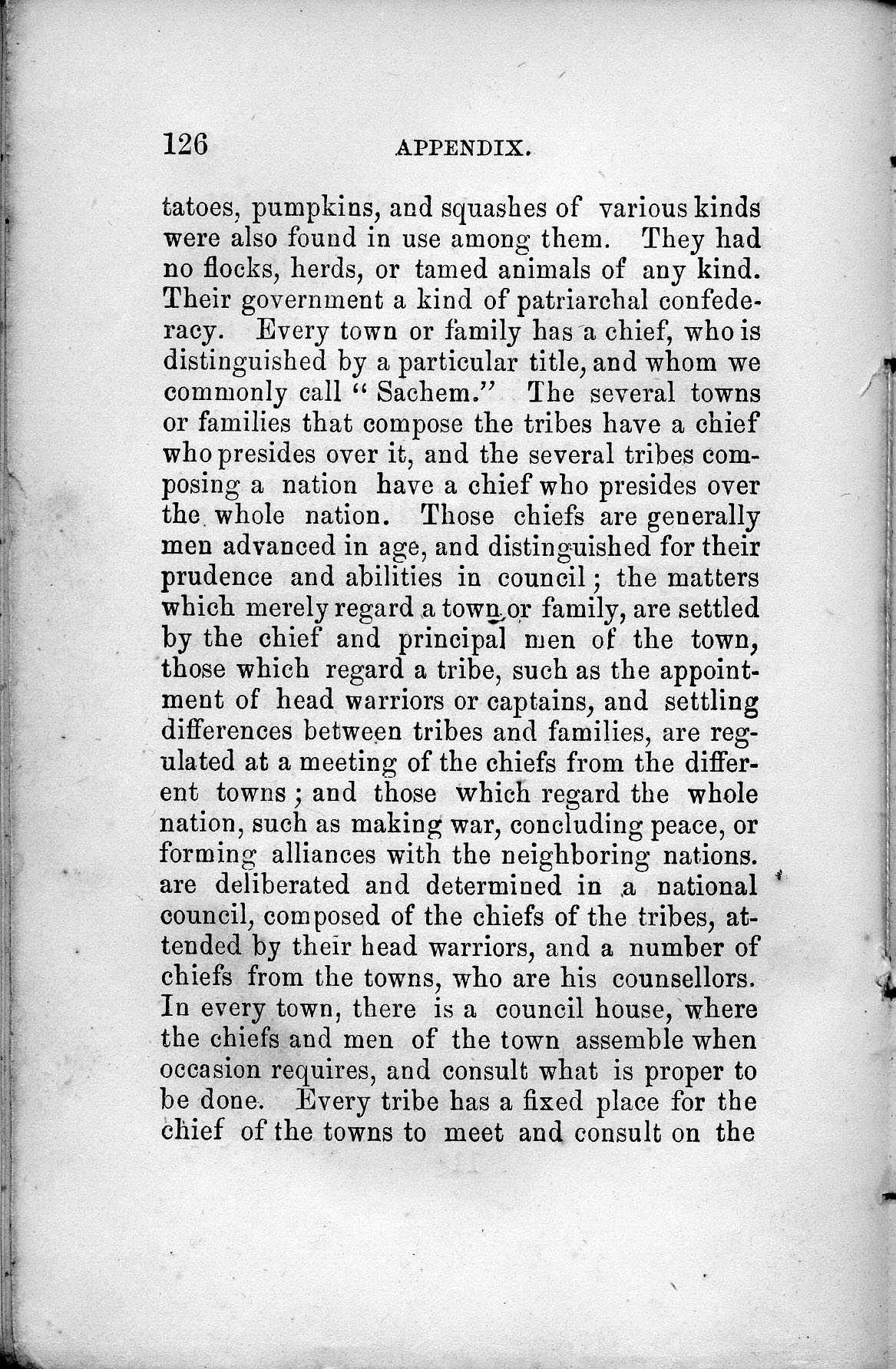tatoes, pumpkins, and squashes of various kinds
were also found
in use among them. They had
no flocks, herds, or tamed animals of
any kind.
Their government a kind of patriarchal confede-
racy.
Every town or family has a chief, who is
distinguished by a
particular title, and whom we
commonly call Sachem.
The several towns
or families that compose the tribes have a
chief
who presides over it, and the several tribes com-
posing
a nation have a chief who presides over
the whole nation. Those
chiefs are generally
men advanced in age, and distinguished for
their
prudence and abilities in council; the matters
which
merely regard a town or family, are settled
by the chief and
principal men of the town,
those which regard a tribe, such as the
appoint-
ment of head warriors or captains, and settling
differences between tribes and families, are reg-
ulated at a
meeting of the chiefs from the differ-
ent towns; and those which
regard the whole
nation, such as making war, concluding peace,
or
forming alliances with the neighboring nations.
are
deliberated and determined in a national
council, composed of the
chiefs of the tribes, at-
tended by their head warriors, and a
number of
chiefs from the towns, who are his counsellors.
In
every town, there is a council house, where
the chiefs and men of
the town assemble when
occasion requires, and consult what is
proper to
be done. Every tribe has a fixed place for the
chief
of the towns to meet and consult on the

